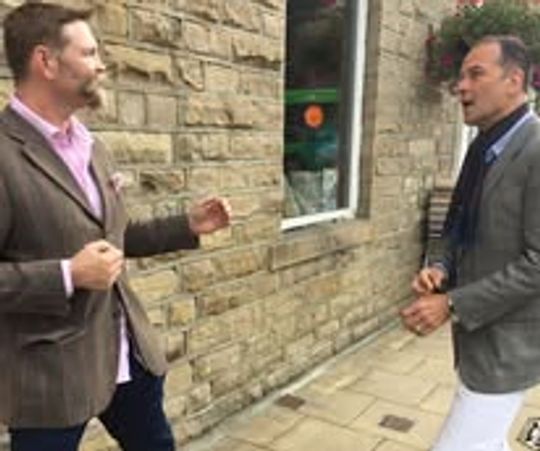Join our Mailing List
Articles
💡 Support Budo Mindset Magazine! 💡
If you enjoy Budo Mindset and believe in our mission to highlight traditional karate, inclusivity, and leadership, please consider supporting us! Every coffee fuels our work and keeps this platform thriving! ☕🥋
Articles

Meikyo: Polishing the Mirror
In this reflective piece, Sensei Hayden Meredith shares personal insights into the kata Meikyo, exploring its origins, symbolism, and what it truly means to “polish the mirror” — both in technique and in spirit.

My 30-Person Kumite Challenge: A True Test of Endurance
In January 1988, I embarked on one of the most physically demanding challenges of my karate career — a 30-person kumite. What began as a fundraising effort quickly turned into an intense test of endurance, strength, and willpower. This article takes you back to the brutal training of the 80s, revealing the full-contact sparring, the injuries, and the mental grit needed to push through it all. It’s a raw look at the trials of karate during that era and the lessons that still shape my approach today.

Adapting to Injury: A Karateka’s Path Forward
In this powerful and personal article, Sensei Andy Patton shares his journey of adapting to a permanent hip injury while continuing to train, teach, and evolve in Shotokan Karate. Offering practical advice and honest reflections, he shows that injury need not mark the end of the martial arts path—but can instead lead to a deeper, more resilient practice. We're dedicated to helping you live your best life. From healthy recipes to travel tips, we've got everything you need.

My Life As a Woman In Karate
In this insightful article, Ellen Grey, 1st Dan, shares her personal reflections on the challenges and rewards of being a woman in karate. From the dojo to life beyond the mat, Ellen explores how karate empowers her and addresses the unique experiences women face in martial arts. Whether you're a fellow female karateka or a sensei looking to foster a more inclusive dojo, this piece offers valuable perspectives for everyone in the karate community.

A Week of Karate: Reflecting on My Journey
In this article, Sensei Joe Hicks reflects on his journey in karate, sharing invaluable lessons from key instructors that have shaped his practice. From his first experiences under Colin Sensei to pivotal teachings from Shihan Peter Dennis and the ongoing influence of Bob Hague Sensei, this article delves into the principles, experiences, and stories that have defined his path. With insights from the recent Yorkshire TaiKai competition, Sensei Hicks offers wisdom and encouragement for martial artists at all stages of their journey.

In the Presence of Legends: A Karate Camp with Richard Amos and Matt Price Sensei
This past weekend, I had the honor of training with two highly respected instructors in the world of karate: Richard Amos and Matt Price sensei. Their expertise, energy, and insight left me deeply inspired and reminded me of the power of dedication and discipline in the martial arts. In this article, I share my reflections on the camp, the lessons I learned, and the incredible experiences that came from training with these two legends.

From Sidelines to Brown Belt: My Karate Journey
In her heartfelt article, Heidi shares her journey from a sports-obsessed childhood to discovering karate at nearly 40. She reflects on the resilience, strength, and sense of community she found in Tanren Dojo, a family-centered space that empowers women of all ages. Through her experiences, Heidi highlights how karate not only transformed her physically but also provided a powerful antidote to toxic masculinity in today’s world.

A Week of Karate: Reflecting on My Journey
In this article, Sensei Joe Hicks reflects on his journey in karate, sharing invaluable lessons from key instructors that have shaped his practice. From his first experiences under Colin Sensei to pivotal teachings from Shihan Peter Dennis and the ongoing influence of Bob Hague Sensei, this article delves into the principles, experiences, and stories that have defined his path. With insights from the recent Yorkshire TaiKai competition, Sensei Hicks offers wisdom and encouragement for martial artists at all stages of their journey.

PART 2 OF 8: The Physical Benefits of Karate: Building Strength and Cardiovascular Health
In this article, Fran Charlton dives into the physical benefits of karate, highlighting how regular practice contributes to improved cardiovascular health, strength, and bone density. Through research-backed insights, Fran explores how the dynamic movements of karate, from kata to kumite, boost fitness and well-being. Whether you’re a beginner or an experienced practitioner, discover how karate can help build a healthier body, enhance stamina, and prevent injury.

Adapting to Injury: A Karateka’s Path Forward
In this powerful and personal article, Sensei Andy Patton shares his journey of adapting to a permanent hip injury while continuing to train, teach, and evolve in Shotokan Karate. Offering practical advice and honest reflections, he shows that injury need not mark the end of the martial arts path—but can instead lead to a deeper, more resilient practice. We're dedicated to helping you live your best life. From healthy recipes to travel tips, we've got everything you need.

Transitioning from Student to Teacher
In this insightful article, Sensei Yanti Amos shares invaluable advice for those transitioning from student to teacher in the dojo. If you've been asked to teach your first class but feel unprepared, you're not alone. Yanti's guidance emphasizes the importance of humility, clarity, and the willingness to learn, even as you take on the role of instructor. Whether you're a newly promoted Nidan or a seasoned practitioner stepping into a teaching role for the first time, this article will help ease your nerves and provide actionable steps for your first class.
